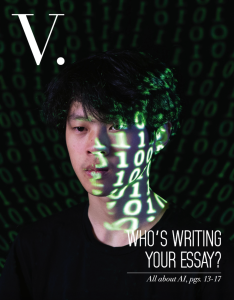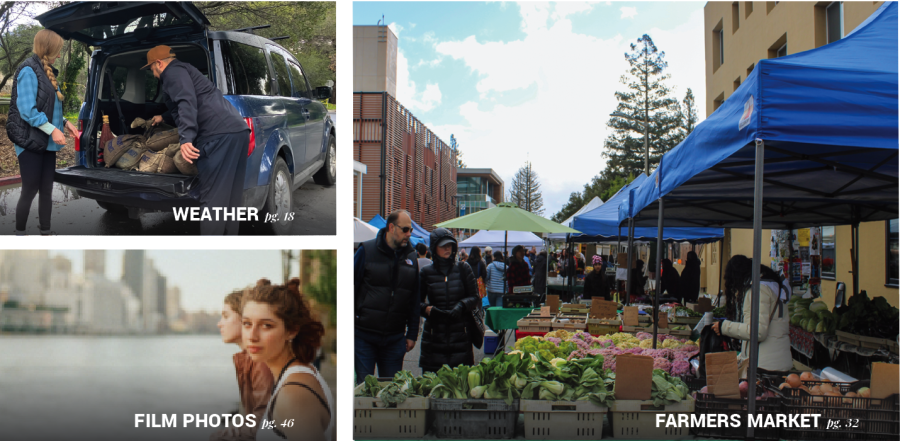From the editors: Architecture of the future
Another story about ChatGPT?
If it feels like discussions about AI-generated work have taken over your news and social media feeds, we think that that’s a good thing. Verde is far from the first publication to cover ChatGPT’s production of work that is more humanlike than ever before — but it also will be far from the last, because AI-generated work is not a fad topic. Its relevance is not fleeting.
Now that we are four issues into our terms as editors-in-chief, it is time to try something new. While the magazine is conventionally split by section — Features, Profiles, Culture and then Perspectives — this issue comes with a new category: the cover package.
We urge the student body to explore this section about artificial intelligence and its implications on our lives and schooling. We believe that AI will become an increasingly integral part of all of our lives, with this month and issue making the beginning of this shift.
The software is explored broadly in the feature “Can’t deny the AI” by Digital Director Ashmita Rajmohan and staff writer Divya Gandhi. The writers uncover how teachers are dealing with the new tool and how students are perceiving and using the new technology.
Next, we present two student perspectives by staff writers Nadia Soberg and Ashray Gupta.
Soberg’s “Are you George Santos 2.0?” dives into the Congressman’s recent scandal, arguing that students should take an active role in making sure that they stay honest, unlike Santos, in a world where AI makes academic dishonesty increasingly easy.
In “Adapting to AI,” Gupta reframes the narrative, presenting a case for why the recent developments in AI capabilities should be embraced — not feared — by schools.
We hope Verde’s AI cover package will help inform and contribute new perspectives to the ongoing conversation on the use of AI in our academic and everyday lives.
Outside of AI, this issue offers two writer’s perspectives on issues regarding how our community and education develops that we want to highlight.
In “Canvas Conundrum,” Profiles and Sports Editor Nadav Sternheim highlights the importance of being able to teach controversial topics that have academic value after the firing of a Hamline University Art History adjunct professor for showing an image of the prophet Muhammah.
In “History vs. Housing,” staff writer Asha Kulkarni argues that the city and broader community should balance preserving the history of Palo Alto with ensuring that there is enough affordable housing to support a thriving community, honing in on the controversy surrounding the potential demolishing of the building that was once occupied by Fry’s Electronics.
Ultimately, we hope that this issue can contribute to the ongoing conversations about what our future looks like — everything from the role of AI in our lives as high school students to the nuances of preserving history.
On the cover
 Binary zeros and ones are projected onto Palo Alto High School junior Beck Lynn’s face in a photo captured by Editor-in-Chief Meena Narayanaswami. The code is a visual representation of recent AI tool ChatGPT, which is revolutionizing academics and everyday life. The half of Lynn’s face without binary conveys the subtlety of AI’s ever-changing capabilities that makes its work increasingly indistinguishable from original human work.
Binary zeros and ones are projected onto Palo Alto High School junior Beck Lynn’s face in a photo captured by Editor-in-Chief Meena Narayanaswami. The code is a visual representation of recent AI tool ChatGPT, which is revolutionizing academics and everyday life. The half of Lynn’s face without binary conveys the subtlety of AI’s ever-changing capabilities that makes its work increasingly indistinguishable from original human work.
Find the full PDF of our magazine on Issuu.



